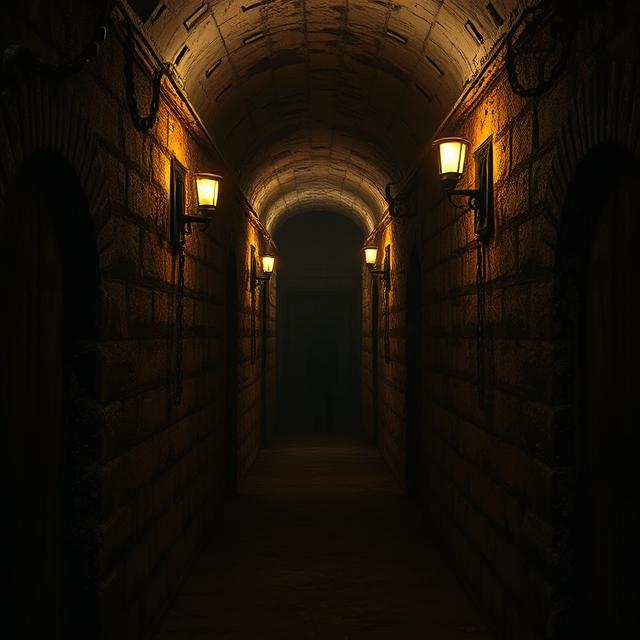Belle Sorenson Gunness was an imposing figure, both physically and in the annals of true crime. Born in Norway in 1859, she emigrated to the United States and, over the course of several decades, left a trail of missing men and suspicious deaths in her wake. Operating primarily from her farm in La Porte, Indiana, in the late 19th and early 20th centuries, Gunness used deceptive charm and promises of marriage and financial security to lure numerous suitors to their doom, establishing a horrifying legacy as a black widow on an unprecedented scale.
Belle’s early life in Norway was marked by hardship, and some accounts suggest a traumatic incident may have shaped her later ruthlessness. Upon arriving in America, she married twice, and both her husbands died under suspicious circumstances, yielding significant life insurance payouts. These early deaths, while raising some eyebrows locally, were largely attributed to natural causes or accidents at the time. However, they now stand as grim foreshadowings of the calculated killings to come.
The true horror of Belle Gunness’s activities began to unfold after she moved to her isolated farm in La Porte. Through lonely hearts advertisements in newspapers catering to Norwegian immigrants, she sought male companionship, specifically targeting widowers or single men with financial resources. Her advertisements painted a picture of a prosperous farm owner seeking a partner to share her life and fortune. Enticed by the prospect of marriage and a comfortable future, numerous men responded to Belle’s solicitations, traveling to La Porte with their savings in hand, only to vanish without a trace.
Belle would often correspond extensively with these men, building trust and painting an alluring picture of life on her farm. Upon their arrival, they would be welcomed into her home, and then, under circumstances that remain largely unknown, they would be murdered. Belle is believed to have employed various methods, including poison, blunt force trauma, and even dismemberment, to ensure her suitors met a final and silent end.
Once her victims were deceased, Belle would systematically dispose of their bodies, often burying them in shallow graves around her sprawling property or even feeding them to her pigs. She would then assume control of their finances, effectively robbing them of their life savings. The disappearances of these men were often explained away by Belle as them having left her, perhaps having taken her money or simply deciding the arrangement wasn’t for them. Given the transient nature of some of these individuals and the limited communication of the era, her explanations often went unchallenged for extended periods.
The sheer number of men who visited Belle Gunness’s farm and were never seen again is staggering. While the exact count remains unknown, investigations following the eventual discovery of her crimes unearthed the remains of at least a dozen individuals, and many more are suspected to have fallen victim to her deadly schemes. Some estimates place her potential death toll as high as forty or more, making her arguably one of the most prolific female serial killers in American history.
The unraveling of Belle Gunness’s horrific activities began in 1908 when her farmhouse mysteriously caught fire. In the aftermath of the blaze, the charred remains of a headless woman, initially believed to be Belle, were discovered along with the bodies of her three children. However, the discovery of human remains buried elsewhere on the property, including those of several of her missing suitors, exposed the true extent of her murderous enterprise.
Ray Lamphere, a former handyman on Belle’s farm who was known to be infatuated with her and had a volatile relationship with her, became a prime suspect in the fire and the subsequent revelations. He was eventually convicted of arson in connection with the fire but was never charged with the murders, though many believed he was complicit or at least knew of Belle’s activities.
The headless body found in the fire was a key point of contention. Some believed it was indeed Belle, and she had been a victim of Lamphere’s revenge. However, others theorized that Belle, a woman of considerable size and strength, had orchestrated the fire and planted the body of another woman to fake her own death and escape with her ill-gotten gains. This theory was fueled by the fact that the headless corpse was smaller than Belle.
The mystery of Belle Gunness’s ultimate fate remains unsolved. Whether she perished in the fire or managed to disappear and start a new life under a different identity is a question that continues to fascinate and fuel speculation. Her legend has grown over time, solidifying her place as a terrifying figure in American folklore and true crime.
Belle Gunness stands as a stark example of the deceptive nature of evil and the capacity for women to commit acts of extreme violence, often driven by motives like greed and a desire for control. Her story, while perhaps not always as widely sensationalized as some male serial killers, is nonetheless a chilling and significant chapter in the history of American true crime. Her methods of luring victims through deception and eliminating them with ruthless efficiency make her one of the deadliest female serial killers on record, a black widow who preyed on hope and trust with devastating consequences.
Want to explore the shadows even deeper? For more chilling cases like this, visit SinisterArchive.com, where the legends are real.




